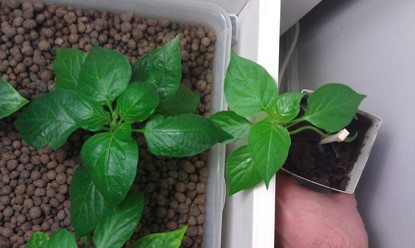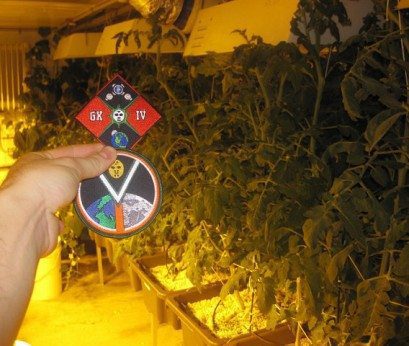It’s the exact opposite of traditional agriculture, and most forms of hydroponic growing are closed system hydroponics.
In any conventional farm field, you find open system growing. The farmer must continue putting nutrients in the form of fertilizers and water in to get a harvest out of the system. Why? Because all the inputs drain to waste, which is really bad for the environment. You won’t find any closed system hydroponics farms contributing to the blue-green algae blooms in rivers and lakes! That all comes from fertilizer runoff in the traditional open system method of growing food and industrial crops.
 There are drain-to-waste hydroponics systems in use, but most progressive growers will choose to use closed system hydroponics for the immense savings of water.
There are drain-to-waste hydroponics systems in use, but most progressive growers will choose to use closed system hydroponics for the immense savings of water.
Closed system hydroponics is the very reason that every explanation of hydroponic growing stresses the fact that it allows growing food with 80% less water and fertilizers. The same nutrients mix the grower puts in at the start of a new crop remains in the system until the plants use it. Every drop not absorbed by the plants is recirculated inside the system. But that’s where things start to get tricky.
Young plants take up less water and nutrients than they will as they grow larger. The nutrients needed to perform at optimum levels change as the crop enters the fruit-bearing stage, increasing its consumption as those fruits and their numbers increase. So, you have “grow” nutrients and “bloom” nutrients, much like your standard backyard garden plants require.
However, a plant’s nature of taking up different rates of water and currently needed nutrition goes unnoticed in the outdoor garden, but it can take on critical proportions of imbalance in the closed hydroponic system. In open system growing – the backyard garden or farm field – if plants get really thirsty, Mother Nature might send rain or you can turn on the irrigation to re-balance their uptake.
 The grower IS Mother Nature
The grower IS Mother Nature
In a closed system environment, you become mother nature – it is up to you to monitor the pH level and nutrient concentrations in the water in the system reservoir, and make necessary adjustments in a timely fashion. It doesn’t matter what method of hydroponic growing you use either. The same crop will have the same basic uptake behaviors in its various growth stages, whether you’ve got them in a deep water culture, nutrient film technique, ebb-and-flow, or aeroponics setup.
Some see this as making it too complicated, but in truth, you’ll never have better control over your harvest size and quality as you do in closed system hydroponics. Of course, since you’re in charge of maintaining the status quo in this environment, the climate is also your responsibility and can have a huge influence the success of your grow. Yes, that raises your level of daily commitment, but great things are never achieved with minimal or sporadic investment, or by using the insufficient or unsuitable equipment.
Reducing food insecurity calls for gaining total control of your crops. Something that’s totally impossible when you’re growing in an open system, open field or garden. The advantages of closed system hydroponics and indoor growing start adding up when you take a good look at the big picture.
Images courtesy of Romer Jed Medina, mannewaar, and graibeard (at the South Pole!) respectively
 The grower IS Mother Nature
The grower IS Mother Nature
Thank you for the useful manuscript.
Do you have the list of companies which install the closed hydroponic system?